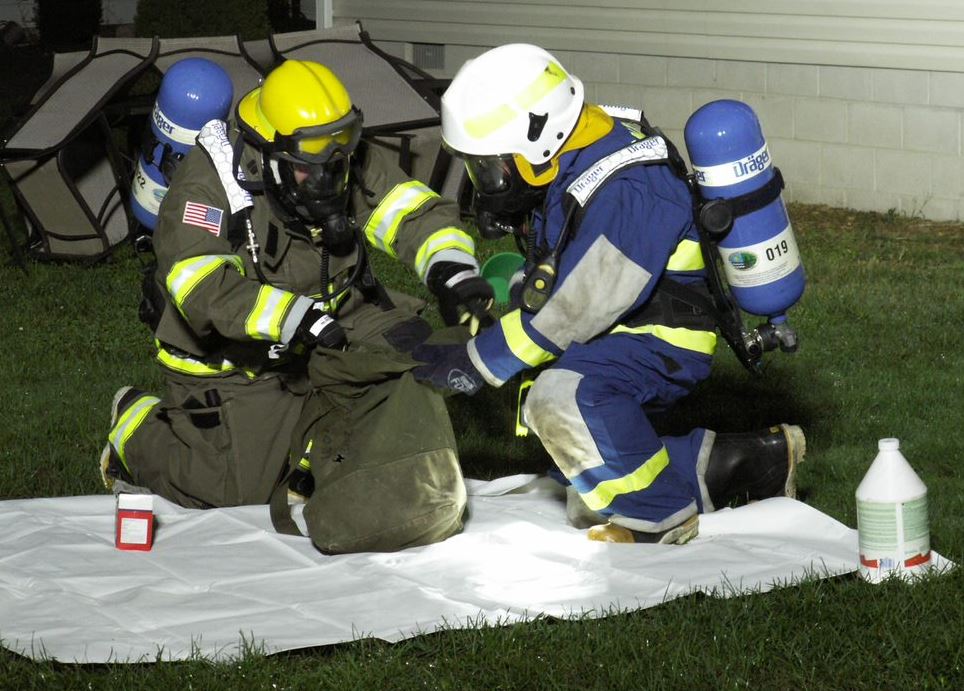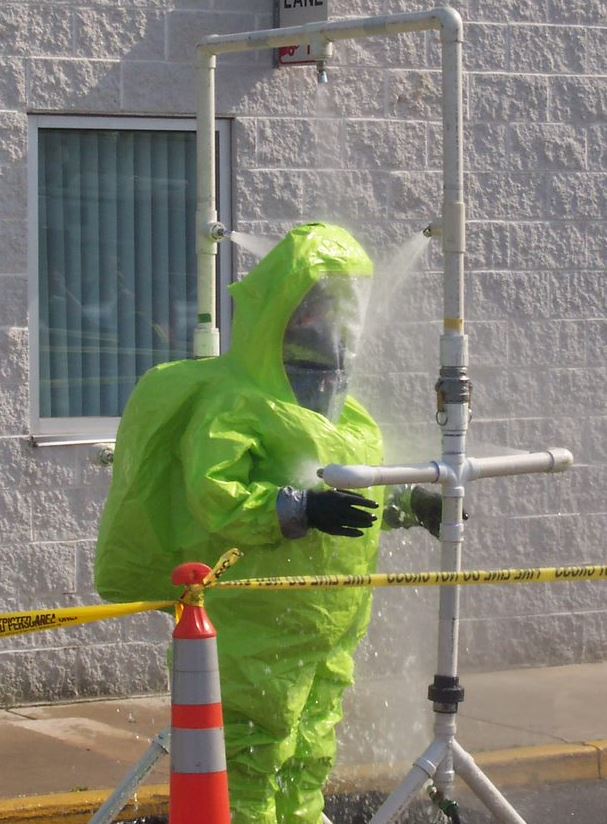By Chief Jamie Bethard

The call came in a little after 4 p.m. on Monday, October 19. Large oil blobs were reported at Broadkill Beach. Our Emergency Response Team (ERT) swung into action and took off immediately to investigate. We were first on the scene. Matt Higgins, one of our senior on-scene coordinators, was first out the door. I wasn’t too far behind pulling our Gator utility vehicle designed for driving on the beach.
We worked around the clock with our Department of Natural Resources and Environmental Control, state, federal and volunteer partners to complete the cleanup along our entire coastline. More than 85 tons of oily debris was removed during the spill response. We finished up completely on December 7.
Report environmental complaints, spills, releases, trash dumping and more. You will be asked when and where, and for your name and contact information (which will be kept confidential).
That’s just one example of what we do; our core group of four on-scene coordinators and I respond to hazardous materials and substance emergencies around the clock every day. We are part of DNREC’s mission to keep the public and our environment safe. From responding to oil spills along our waterways, to overturned trucks spilling dangerous fuel or cargo on our highways, to dismantling meth labs, and protecting the public from radiation incidents and potential weapons of mass destruction, we are there to help prevent harm to the public and our environment.
We use the latest in technology. From our headquarters in Dover to our satellite facility in New Castle County we respond statewide. Our hazmat trucks, petroleum response trailers, decontamination units and Bobcat and Gator utility vehicles, contain materials to soak up oil spills, along with pumps and vacuums, instruments to analyze and identify unknown substances, hazmat suits, and much more.

Depending on the severity of the incident, we have five full-timers in our ERT unit along with 13 trained officers from our Environmental Crimes Unit and 10 after-hours responders within DNREC. We also work with federal, state and local law enforcement, volunteer fire departments, the Delaware Departments of Transportation and Agriculture, and others.
We get as many as 450 calls per year and volume has risen 3 to 5% every year. Sixty percent of what we do is petroleum oriented – mostly investigating and cleaning up motor fuel and residential heating oil spills. The other 40% of the calls we receive deal with hazardous materials – corrosives, radioactive material, medical waste and others.
Our most common responses are for transportation-related petroleum spills. If a tractor trailer gets into a crash and the saddle tank is damaged, we’re there for the cleanup. Same with residential oil spills.

Our most dangerous calls are for industrial accidents. We’re the ones who climb the towers and deal with toxic chemicals and water coming down on top of us. We’re trying to manage the whole incident from a hazmat perspective to keep the public and ourselves safe. Our people are climbing ladders with protective suits and self-contained breathing apparatus strapped to our backs. It’s often hard for us to see – it’s like trying to work in a monsoon.
Our second most dangerous situation is when we work along highways, especially Route 1 and Interstate 95. It often seems like drivers just don’t care – they get distracted, they’re in a hurry or they’re not happy because the incident is slowing them down. We wish more of the public understood that we don’t create the slowdowns – we’re trying to clean up incidents and get finished as quickly as we can in order to reopen the roadways.
But our work is not serious all the time. I’ve been with the Emergency Response Team for 31 years. I have to say that the funniest incident we responded to happened a few years ago in Dover. We call it the “Bad Sneaker Lady” event. She had called the fire department numerous times for an unknown odor in her residence. They couldn’t find anything. She called the gas company and they were stumped. So, they called us.
What was the mysterious odor? It turns out that she had bought a brand-new pair of sneakers, and they stunk. Because of the stench, she had even put them in a plastic bag in the mailbox in front of her house. When we arrived and did a sweep, I told her to close her eyes and breathe in as we escorted her out to the mailbox. She inhaled deeply and said, “Oh my gosh, that’s it!” The odor was the sneakers and it had lingered in her house.
It’s good when you can laugh about the job. We get many heart-wrenching calls – a lot of fatal crashes. The most difficult situation we deal with is when someone loses their life.
We’re a unique and multi-faceted unit. For many hazmat teams in fire departments, once the problem is identified and containerized, they’re done. We, on the other hand, are there from start to finish, from the time we get the call, to when the “grass grows again.” But we are a dedicated and tough team and we wouldn’t want it any other way.